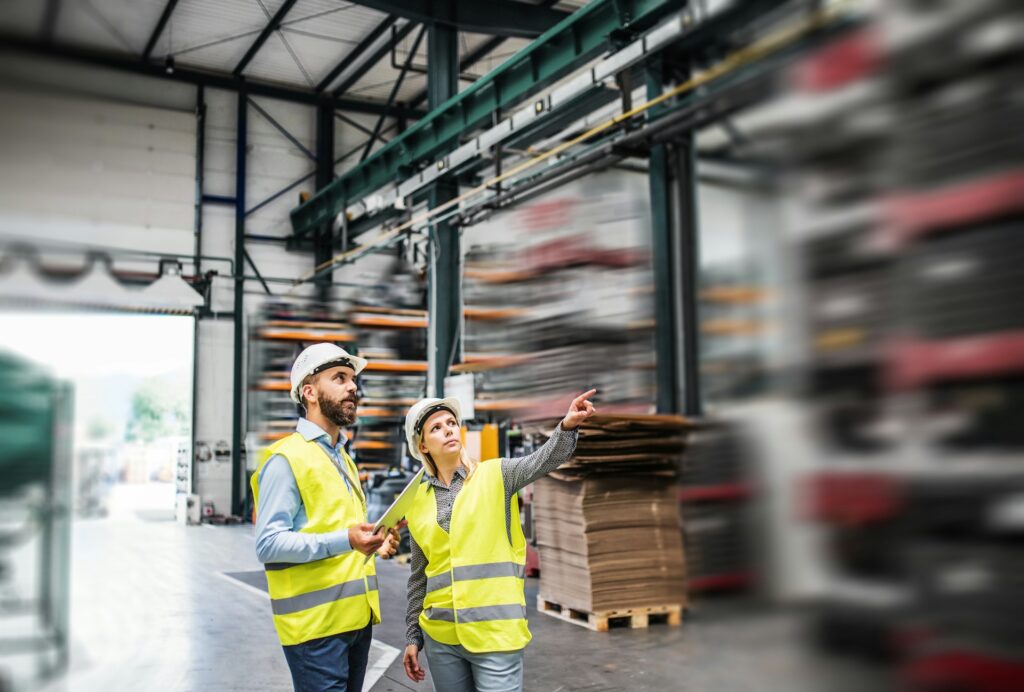The green tech tackling construction’s waste

Construction is a cornerstone of the economy – but of course there will always be some costs. The industry is responsible for a very significant level of the global total waste and carbon dioxide emissions. Given mounting climate concerns and more costly materials, it’s no surprise that there’s a drive for more efficient and sustainable practices.
Through the clever reuse and allocation of materials – enabled by recent and exciting advances in tech – it’s now very possible to turn the page and reduce waste enormously.
- The UK government has previously announced a £166 million cash injection in green technology.
- Innovations such as off-site manufacturing could reduce waste by up to 90%, while digital tools such as AI have the potential to reduce waste before a project has even begun.
- The global drive to reduce waste in construction, along with the new tech and methodologies, will support future jobs in the industry.
The industry is gearing up for green tech
Governments and leading firms are realising that largescale investment in green technology is required to mitigate the environmental impact of construction, and future-proof the built environment.
Last year witnessed a $2.2 billion global investment in green construction tech, according to a report by venture capital firm, A/O PropTech, while the UK government has previously announced a £166 million cash injection in green tech, supporting an estimated 60,000 jobs. The stage for sustainable development is being set, but what exactly is being done to address the industry’s waste?
From electric arc furnaces to 3D modelling, here are some of the technologies improving efficiencies, powering the circular economy, and giving materials a new lease of life.
Leveraging sustainable steel
Much of construction’s re-used waste is ‘downcycled’, but tech-enabled circular approaches could help retain greater value from materials. This is perhaps best seen in steel: one of construction’s most important, and recyclable, resources. Steel is commonly reused due to its high cost, but newer methods – such as electric arc furnaces (EAFs) – can melt down scrap rather than converting raw material, emitting noticeably less CO2 in the process.
The next evolution of sustainable steel is green hydrogen technology, potentially used in conjunction with EAFs, which could further aid decarbonisation. A silver bullet for sustainable steel? Due to its high running costs, perhaps not yet, although it’s a significant step towards a circular economy led by tech innovation.
Modular construction and 3D printing
Increasingly, some of green construction’s most exciting developments take place away from building sites. Advances in modular construction – where ready-made building components are built under controlled factory conditions and delivered to site – are helping to bolster productivity and reduce waste. One study has even suggested that off-site manufacturing’s improved resource efficiency has the potential to reduce waste by up to 90%.
These modern methods of construction (MMC) are augmented by 3D printing. Also known as additive manufacturing, this process typically results in less waste than traditional methods, only using the necessary material for building a structure. While the technology is still developing, it’s showing potential to construct at scale – and potentially alleviating the domestic and global housing shortage.
Using 3D-extruded concrete, there are plans to build 46 affordable, net-zero carbon homes in Accrington, Lancashire. However, the rapid delivery of affordable housing has already gained traction across the world: around 45% of all Swedish homes are built using off-site construction, which also accounts for between 15-20% of new homes in Japan. And with the increasing sophistication of digital tools, this trend could see further growth.
Digital tools can support sustainable growth
Digital tools have the potential to reduce waste before a project has even begun. Building Information Modelling (BIM) can improve the visibility of an entire project’s lifecycle, defining exactly how much material is required to build an asset, and therefore removing the likelihood of surplus material. Moreover, the emergence of generative AI (artificial intelligence) – pushed into the public sphere by ChatGPT – opens a plethora of new digital development opportunities.
Leveraging improved machine learning, AI could be used to draw on existing data sets and product information for more efficient design processes. Furthermore, designers and architects could be empowered by improved 3D visualisation for more optimal decision-making, helping to avoid costly mistakes further down the line.
Green tech will create new jobs
Enabling more efficient and sustainable construction, and the tech behind this endeavour, could support a diversity of new green skills and employment opportunities. While some may be concerned that advances in technology – particularly regarding AI and automation – could take certain jobs, there is a wide belief that the tech could instead drive employment growth. Organisations that are willing to reskill and upskill their staff will be best placed to leverage green technology, while employers with a learning mindset will have access to the widest range of career choices.
The future of green construction is an exciting one for organisations and jobseekers alike, with plenty of new opportunities on the horizon. However, there is no single solution for a systematic reduction of waste in the industry. Emerging technologies must be married with effective environmental policies and regulations – and backed by skilled green professionals with a passion to enact real change.




